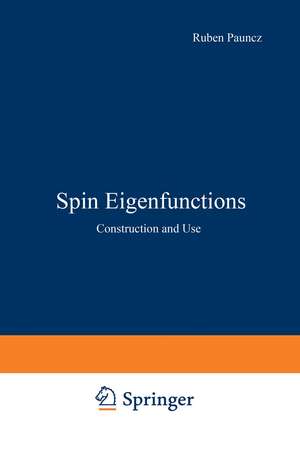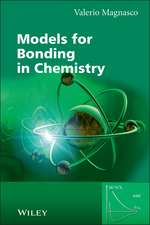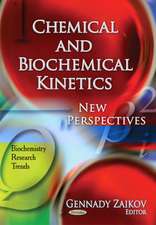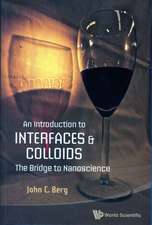Spin Eigenfunctions: Construction and Use
Autor Ruben Paunczen Limba Engleză Paperback – 12 dec 2012
Preț: 780.02 lei
Preț vechi: 951.25 lei
-18% Nou
Puncte Express: 1170
Preț estimativ în valută:
149.25€ • 155.85$ • 123.25£
149.25€ • 155.85$ • 123.25£
Carte tipărită la comandă
Livrare economică 15-29 aprilie
Preluare comenzi: 021 569.72.76
Specificații
ISBN-13: 9781468485288
ISBN-10: 1468485288
Pagini: 388
Ilustrații: XV, 370 p.
Dimensiuni: 155 x 235 x 20 mm
Greutate: 0.54 kg
Ediția:Softcover reprint of the original 1st ed. 1979
Editura: Springer Us
Colecția Springer
Locul publicării:New York, NY, United States
ISBN-10: 1468485288
Pagini: 388
Ilustrații: XV, 370 p.
Dimensiuni: 155 x 235 x 20 mm
Greutate: 0.54 kg
Ediția:Softcover reprint of the original 1st ed. 1979
Editura: Springer Us
Colecția Springer
Locul publicării:New York, NY, United States
Public țintă
ResearchCuprins
1. Introduction.- 2. Construction of Spin Eigenfunctions from the Products of One-Electron Spin Functions.- 3. Construction of Spin Eigenfunctions from the Products of Two-Electron Spin Eigenfunctions.- 4. Construction of Spin Eigenfunctions by the Projection Operator Method.- 5. Spin-Paired Spin Eigenfunctions.- 6. Basic Notions of the Theory of the Symmetric Group.- 7. Representations of the Symmetric Group Generated by the Spin Eigenfunctions.- 8. Representations of the Symmetric Group Generated by the Projected Spin Functions and Valence Bond Functions.- 9. Combination of Spatial and Spin Functions; Calculation of the Matrix Elements of Operators.- 10. Calculation of the Matrix Elements of the Hamiltonian; Orthogonal Spin Functions.- 11. Calculation of the Matrix Elements of the Hamiltonian; Nonorthogonal Spin Functions.- 12. Spin-Free Quantum Chemistry.- 13. Matrix Elements of the Hamiltonian and the Representation of the Unitary Group.- Appendix 1. Some Basic Algebraic Notions.- A.1.1. Introduction.- A.1.2. Frobenius or Group Algebra; Convolution Algebra.- A.1.2.1. Invariant Mean.- A.1.2.2. Frobenius or Group Algebra.- A.1.2.3. Convolution Algebra.- A.1.3. Some Algebraic Notions.- A.1.4. The Centrum of the Algebra.- A.1.5. Irreducible Representations; Schur’s Lemma.- A.1.6. The Matric Basis.- A.1.7. Symmetry Adaptation.- A.1.8. Wigner-Eckart Theorem.- References.- Appendix 2. The Coset Representation.- A.2.1. Introduction.- A.2.2. The Character of an Element g in the Coset Representation..- Appendix 3. Double Coset.- A.3.1. The Double Coset Decomposition.- A.3.2. The Number of Elements in a Double Coset.- Appendix 4. The Method of Spinor Invariants.- A.4.1. Spinors and Their Transformation Properties.- A.4.2. The Method of Spinor Invariants.- A.4.3. Constructionof the Genealogical Spin Functions by the Method of Spinor Invariants.- A.4.4. Normalization Factors.- A.4.5. Construction of the Serber Functions by the Method of Spinor Invariants.- A.4.6. Singlet Functions as Spinor Invariants.- References.- A.5.1. The Formalism of Second Quantization.- A.5.2. Representation of the Spin Operators in the Second-Quantization Formalism.- A.5.3. Review of the Papers That Use the Second-Quantization Formalism for the Construction of Spin Eigenfunctions.- A.5.3.1. Genealogical Construction.- A.5.3.2. Projection Operator Method.- A.5.3.3. Valence Bond Method.- A.5.3.4. The Occupation-Branching-Number Representation.- References.- Appendix 6. Table of Sanibel Coefficients.- Reference.- Author Index.













